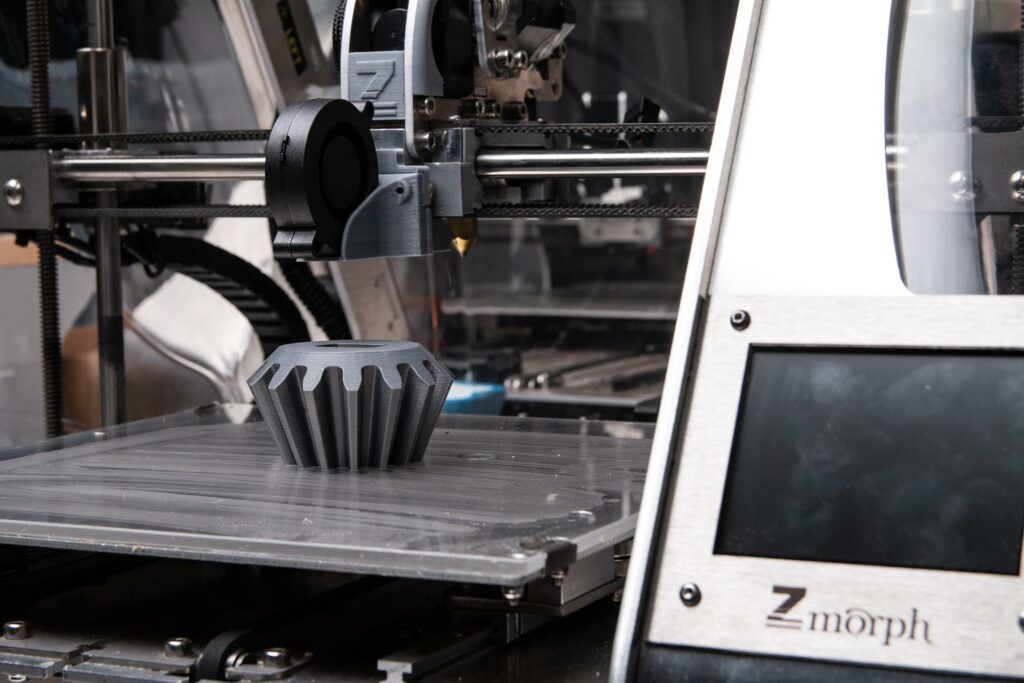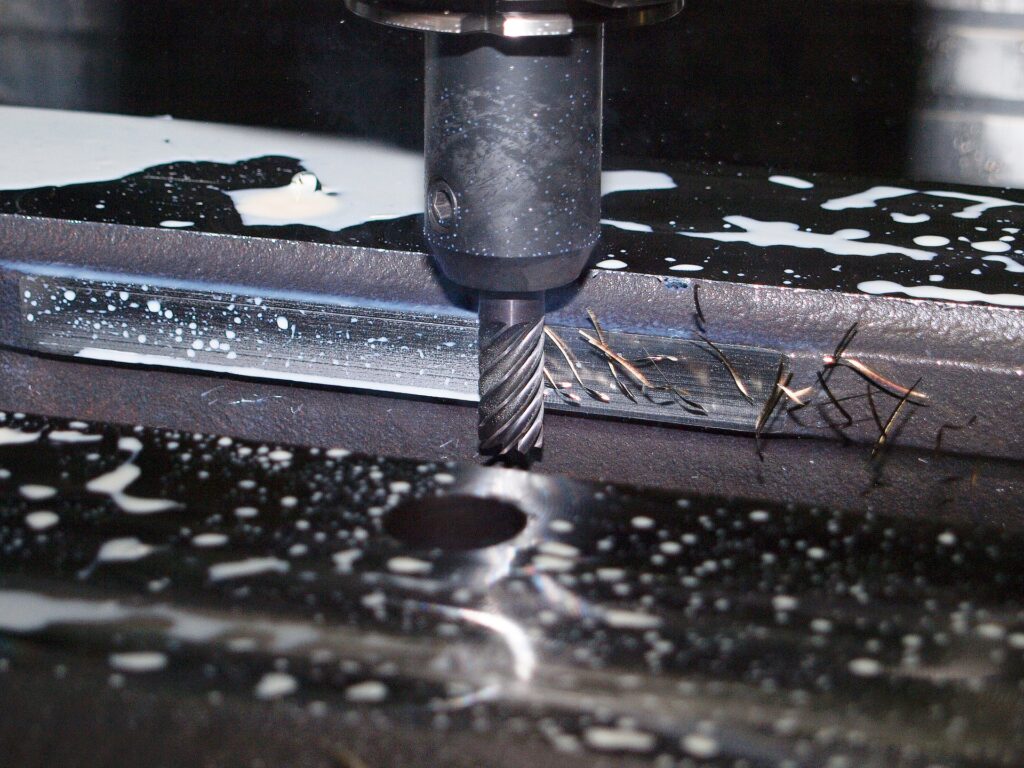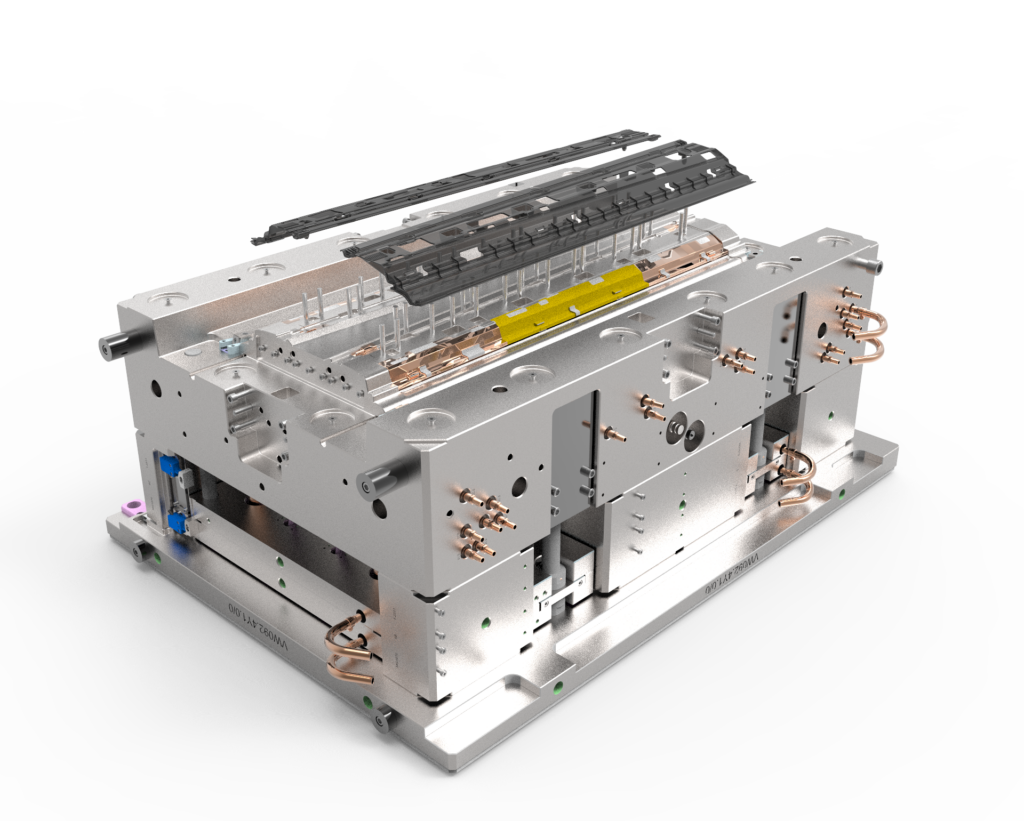The launch of an in-house electronic product most often involves the development of an entire production process allowing for the ongoing distribution of finished devices destined to eventually reach the customer. Typically, such a product consists of electronic circuits, a case, as well as packaging and additional accessories; of course, in addition to the tangible contents of the box itself, the customer may receive firmware, a web system or a mobile application. Now, however, we will focus on the tangible components, more specifically, the enclosures and the manufacturing processes to produce them.
The production of enclosures for devices is important because it is usually the component of the device with which the customer has the most experience in the initial phase of use, it creates the first impression after opening the box and is also often touched and examined by the customer himself. In order for the end user to enjoy a great product, we must take care of the enclosure design and manufacturing aspect. What enclosure manufacturing technologies do we distinguish? How do you start producing enclosures for your own devices? Which technologies will be the most suitable? We will answer these questions in this article.
What housing production technologies do we distinguish?
Manufacturing methods for visual and mechanical components during electronics production are highly developed, but looking at the requirements of end customers, we can confidently choose the four most popular ways to produce enclosures. The methods in question are 3D printing, CNC machining, thermoforming and injection molding. In order to determine the production method that will be applied to our product, it is worth discussing how the various manufacturing processes work.
3D printing
In the most popular technology that is FFF (Fused Filament Fabrication), the process is done by melting the material and applying it in layers, the model made on professional equipment can show high quality of finished product and material strength. We can do production from popular materials such as HIPS, ABS, PET, Nylon or PP. Resin and sintered polymer powder and metal production technologies are also available, but these are much more expensive to produce and are usually avoided for larger production batches.

CNC machining
Applied most often to products that have metal enclosures and prefabricated universal enclosures, depending on the application and design requirements, we can use prefabricated enclosures from companies such as metal enclosure manufacturers HAMMOND or the national manufacturing company that creates plastic enclosures KRADEX, or with the help of CNC machining produce our own lump from a block or roll of specific material to be processed. In the case of a universal enclosure, it is a good idea to take it into account already at the product design stage and in the production process cut only specific holes for protruding controls or communicating with the user.

Thermoforming
The process of thermoforming is based on heating the molded plastic and imprinting it on the model, the plastic is additionally sucked by vacuum so that the material perfectly covers the model and at the same time cools the plastic from which we make a mold, the plastic here must be in the form of a sheet of material such as HIPS, PET or ABS of a certain thickness. The process, however, requires that the model whose mold we want to obtain be produced beforehand.

Injection molding
This production method is most popular among companies where large-scale production of enclosures is prevalent. Injection molding involves injecting plastic into a mold in which it solidifies. The range of materials available for injection molding is vast and the process itself gives us a high quality finish of the final product. Starting this production, however, requires the production of an injection mold.

What production technologies will be most appropriate?
This question is very difficult, but it is fully dependent on the number of components we produce. In order to easily group the demand in the housing market, we will select a few customer groups that may be applicable during the selection of production technology.
- production of fully individual plastic housings - 0 - 500 pieces per quarter
- production of fully individual plastic cases - 500 - 1000 pieces per quarter
- production of fully individual plastic enclosures - more than 1000 pieces per quarter
- production of plastic enclosures based on finished products - 0 - 500 units per quarter
- production of plastic enclosures based on finished products - more than 500 pieces per quarter
- production based on finished metal enclosures
Production of fully customized plastic cases - 0 - 500 pieces per quarter
Starting with the production of individual plastic housings designed, for example, by the electronic device design team for the smallest volume, it is worth leaning towards 3D printing, it will allow us to significantly reduce the cost of entry and make small batches of products with the ability to easily and almost costlessly change the visual form of our product.
Production of fully customized plastic enclosures - 500 - 1000 pieces per quarter
When the production volume exceeds 500 units per month, it is worth considering thermoforming, this method, however, is limited by the shapes of the device itself, if these are very advanced shapes with a small amount of flat surface that allows the model to be placed for molding on the working table of the thermoforming device, then unfortunately this method will prove ineffective. In such a case, it is worth considering 3D printing, or if the cost of manufacturing the device housing will exceed the budget consider injection molding.
Production of fully customized plastic housings - more than 1,000 pieces per quarter
If the production needs, and the production of enclosures also includes, for example, mechanical components of the device then it is all the more worthwhile to target the injection mold, thanks to the high quality of production injection molds will allow device manufacturers to reduce production costs and increase the quality of manufactured products. In addition, this method will work even if you need to produce thousands of housings and will provide more opportunities for the development of the device's production.
Production of plastic housings based on finished products - 0 - 500 pieces per quarter
In a situation where we use the catalog offer of enclosures from one of the manufacturers of ready-made variants, and our demand does not exceed 500 units per quarter, it is worth deciding on machining enclosures and adapting them to our needs. Milled enclosures will work well wherever the dimensions of the device and the range of customer requirements allow the use of a ready-made product. We should also remember that this solution is sometimes used by professional electronics manufacturers, only after the product has been tested by customers is an injection mold created. It is also worth noting that quality control will be important at this stage of production, especially in the case of a universal case, which is the first time we introduce into the production process of making electronic cases.
Production of plastic housings based on finished products - more than 500 pieces per quarter
When the demand for the production of enclosures and enclosure components increases above 500 pieces per quarter, it is worthwhile for injection molding technology to enter our production processes. In such a case, it is worth turning to a company that will be in the process of designing to provide us with an enclosure ideally suited to our product. Let's remember that injection molding technology significantly reduces its costs in the case of production of thousands of enclosures and allows us to increasingly reduce expenses on the production of electronic devices.
Production based on ready-made metal housings
In case we want to use universal metal enclosures, it is worth considering aluminum enclosures made in a simple way that does not require advanced processing. Each manufacturer of metal enclosures will help us choose the right variant of their products to facilitate our production. In case we need to use universal metal enclosures, we must opt for CNC machining.
How do you start producing enclosures?
Depending on the production method chosen, we will need slightly different resources, and to make the whole process easier we will break it down into two categories.
Custom housing - designed to order
We will need 3D models and technical projections of the design elements to produce the enclosure designed earlier while working on the design of the electronic device or at a later stage.
Modified universal housing
When we want to use ready-made enclosures and only modify them, we need technical projections of the holes, which will be applied to the finished object in the processing.
Once we have the files described above, we can move on to outsourcing production to an outside company or, if we have the right machinery in-house.
If you are interested in making an enclosure design according to your design requirements, an electronic device or firmware, and ordering production in electronic circuit and enclosure technology, we invite you to contact us - we also recommend our extremely extensive quotation form!


